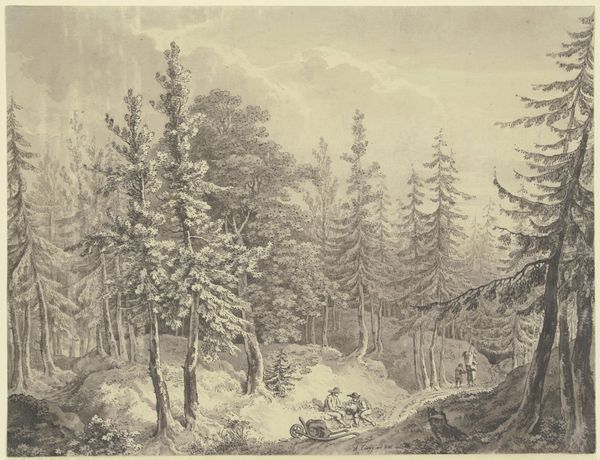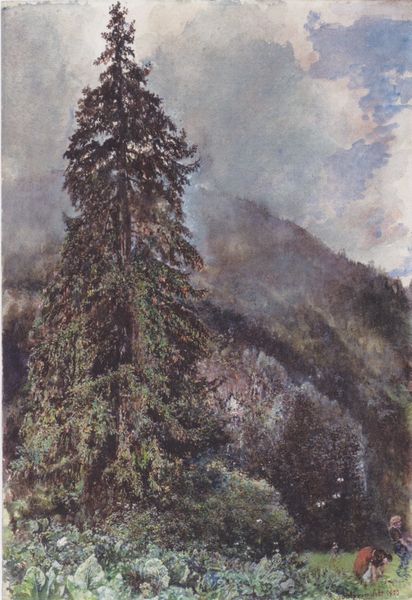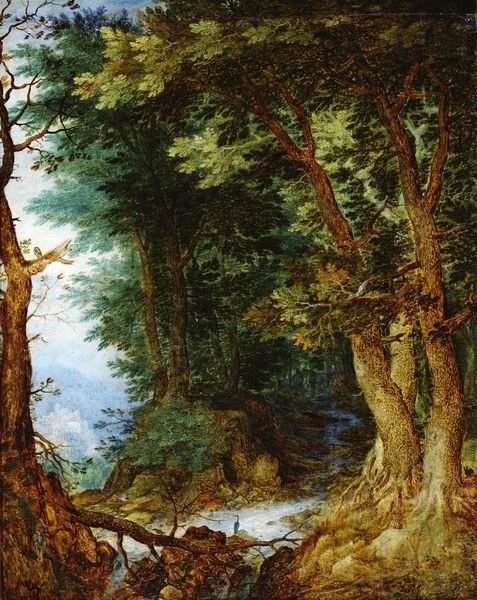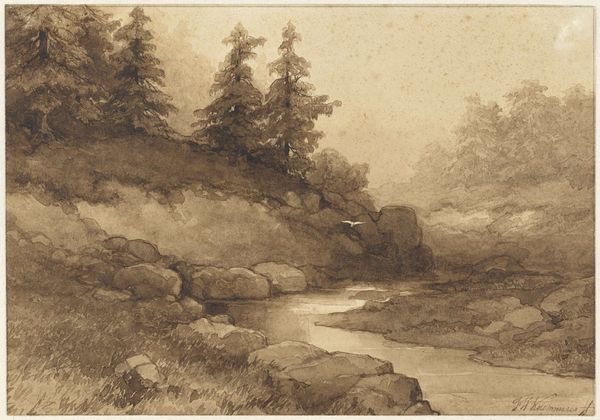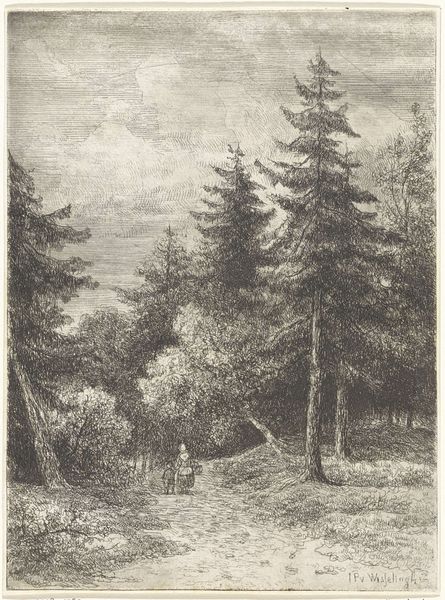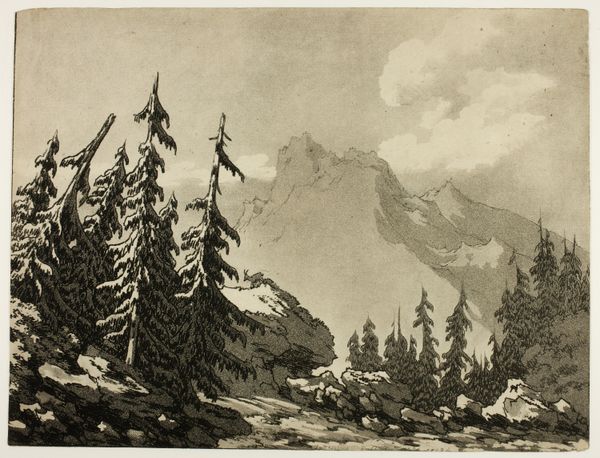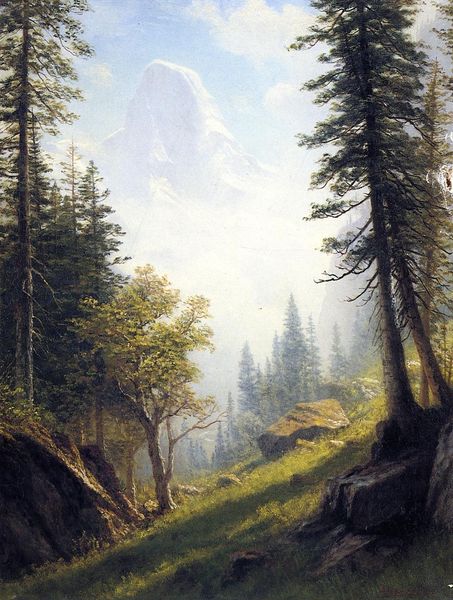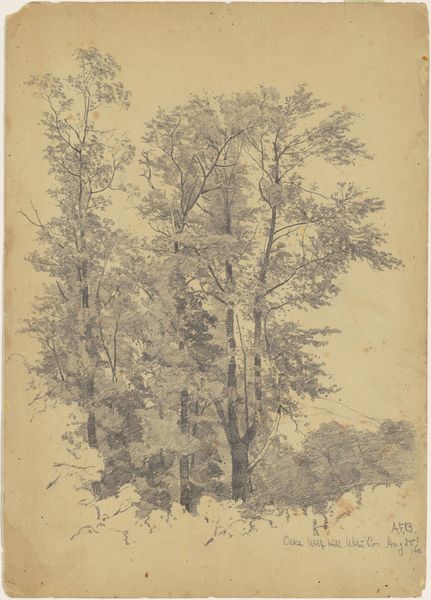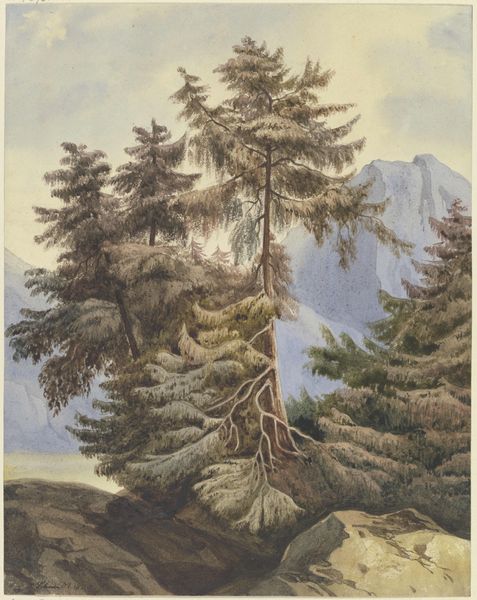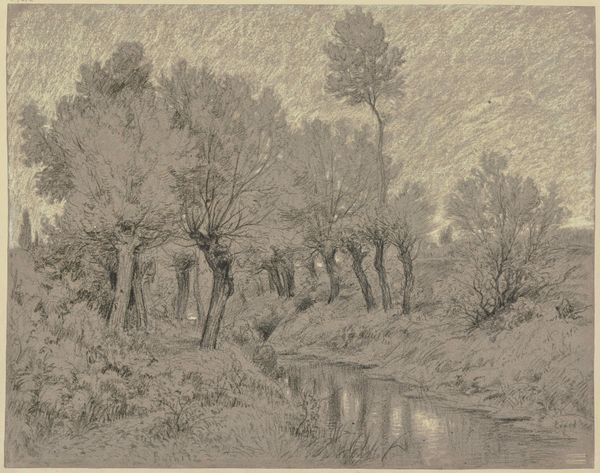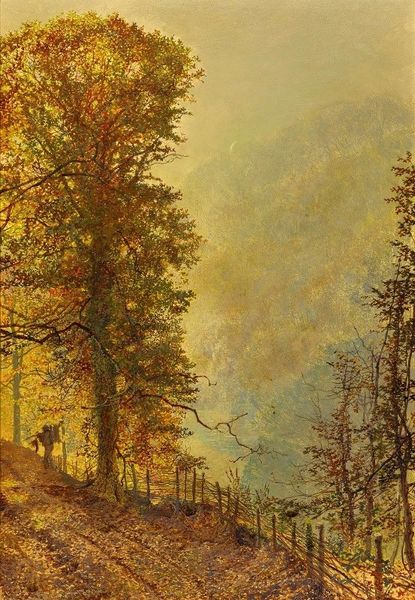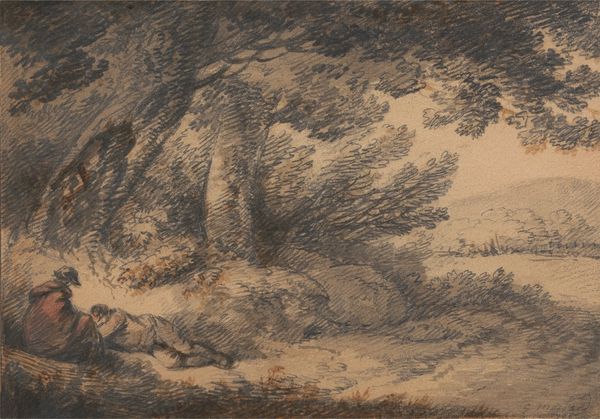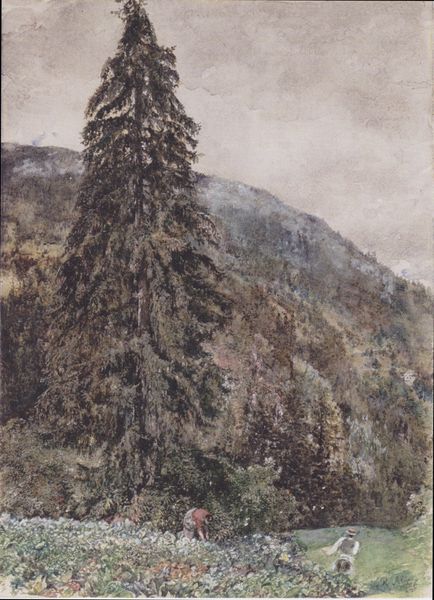
drawing, plein-air, watercolor
#
drawing
#
plein-air
#
landscape
#
oil painting
#
watercolor
#
romanticism
#
watercolor
Dimensions: overall: 61.2 x 84.2 cm (24 1/8 x 33 1/8 in.)
Copyright: National Gallery of Art: CC0 1.0
Curator: What strikes me first is this feeling of hushed reverence; it’s as if the artist held his breath while sketching this forest. It's overwhelmingly…brown, in a soothing way. Editor: We are looking at "An Ancient Pine Forest with a Mountain Stream," a drawing done around 1847 by Alexandre Calame. It demonstrates the 19th-century fascination with wilderness. We might want to consider the availability and use of sepia ink in reproducing landscape imagery during this period. The processes for rendering this sepia tone are relatively inexpensive which allowed the circulation of romantic ideas connected to nature. Curator: Oh, definitely Romantic! All that focus on nature as this overwhelming, spiritual force. Makes me wonder, did Calame drag his art supplies into the woods to catch this on-the-spot or conjure it later, back in the studio, all moody and remembering? Editor: It's described as "plein-air," suggesting the initial sketch at least was created outdoors. The physical demands on the artist in doing this plein-air are worth noting; the accessibility of landscape and mountain regions opened with better infrastructures and the making of landscape imagery became a signifier of a developed nation. Curator: The textures! It feels almost tactile; you can practically feel the rough bark and the chill coming off that stream. You see, these artists – they weren't just painters, they were translators of experiences! Did they think of themselves as translating divine will into landscape? Editor: The use of watercolor provides a certain luminescence and transparency in translating the textures of bark, needle and water. However, considering Calame’s position in a lineage of landscape painters who romanticized the wilderness, the materiality of making should also be critically considered in parallel. Curator: Maybe, but art...it always feels a little more primal than just politics or industrial stuff. It's a longing to reconnect, isn’t it? To shed our skins of modern… stuff. Editor: Art and aesthetics do not exist separately from technology or its economics. What matters to me is to think through what an artwork like this suggests about labor conditions of its making. Curator: Fair enough, but me? I'll wander off into that painted forest... at least in my mind! Editor: And I will continue contemplating the economic structures that brought it to life. Thanks for your whimsical insights.
Comments
No comments
Be the first to comment and join the conversation on the ultimate creative platform.
